Red Drum Details
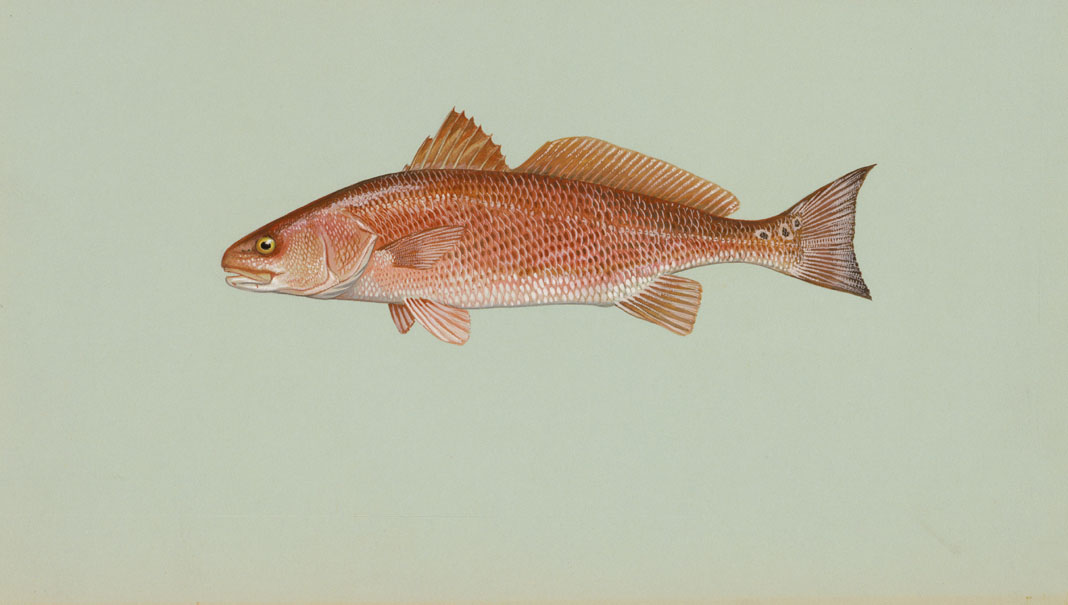
- Water Type: saltwater
- Latin Name: Sciaenops ocellatus
- Common Names: Redfish, channel bass,puppy drum,Rat Red, Bull Red, Or Just "Red"
- Water Temp: 50-82 degrees
- World Record: 94 lbs, 2 ozs
- Last Modified By: bassprochuck on 06/04/09 03:26 PM
- Ask about Red Drum in our forum
Photos
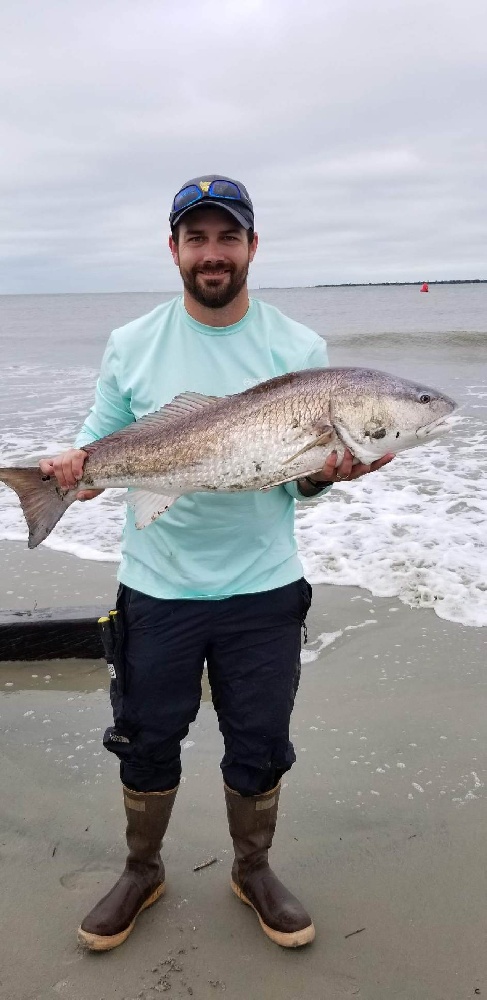

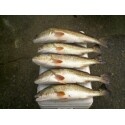
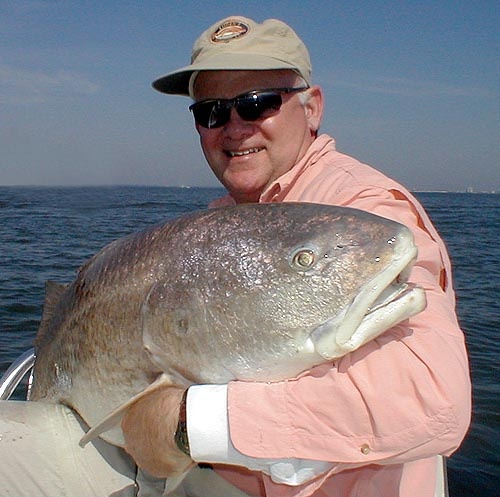

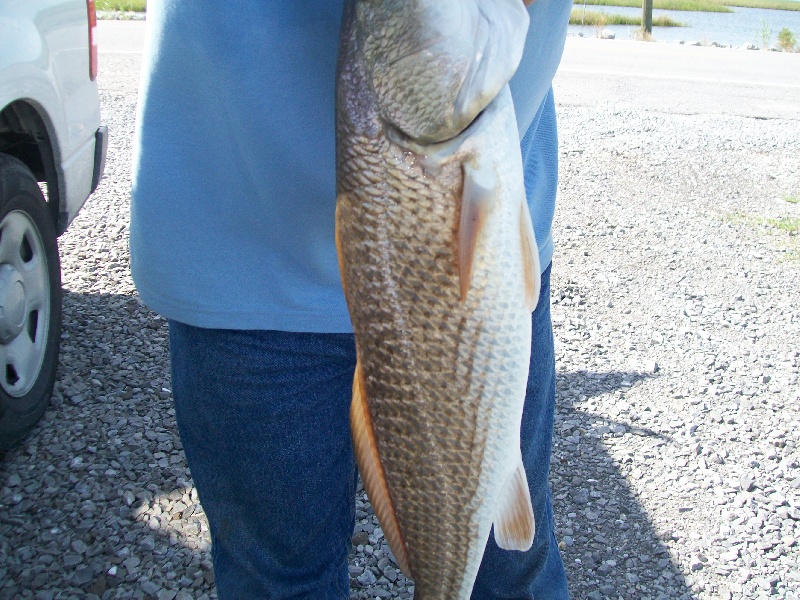
Baits and Tackle for Red Drum
Live Bait (Other) Check Prices
- Live shrimp
- 1/2 Blue Crab.
- Live mullet fished on the bottom
Plastic Swimbait Check Prices
- Artificial Shrimp
Soft Swimbait Check Prices
- H&H COCAHOE MINNOW GREY W/CHARTRUSSE TAIL
Saltwater Swimbait Check Prices
Shrimp Bait Check Prices
- shrimp & cocahoe on popping rigs
Minnow Check Prices
- also used shrimp
Red Drum Description
Red drum are reddish-brown on the back, fading
to white below. Juveniles have a copper or bronze
tint. While most red drum have one distinctive black
spot at the base of the tail, some have several spots;
in 1997, a fish with hundreds of
spots was identified as a red drum
by fish biologists. The body is
elongated and thick, with a gently
arched back and sloping head.
The large scales on the upper
body are rough, while those on the breast area are
smooth. Red drum have two dorsal fins; the front fin
has sharp spines, and the back dorsal fin has soft
rays resembling a flat-top haircut. The tail of an adult
is broad and either flat at the end or slightly concave.
The long pectoral, or side, fins are the color of rust.
The colors of the red drum vary according to
where the fish lives. Red drum in the Gulf of Mexico
are a lighter red than those that reside in muddy
bays. Occupants of white, sandy bottoms have light,
muted tones. When a fish is taken from the water, it
may turn a darker red. Red drum are related to black drum, spotted seatrout, weakfish, mullets and croakers, most of which also make drumming sounds. Scientists believe that the black spot near their tail helps fool predators into attacking the red drum's tail instead of their head, allowing the red drum to escape.
Where they Live
Red drum range from Massachusetts to Key West, Florida, and along the Gulf Coast to Tupxan, Mexico.
Where to Find Them
Red drums prefer shallow waters (1-4 feet deep) along the edges of bays with submerged vegetation such as seagrasses. They are found over all bottom types but they seem to prefer areas with submerged vegetation and soft mud. These fish are also commonly found around oyster reefs. Breaks in continuity of shorelines such as coves, points, jetties, old pier pilings, and guts attract them. They prefer soft mud along jetties, pier pilings and jetties. They are often found in water so shallow that their backs are exposed while swimming. During cold spells large numbers of red drum can be found in tidal creeks and rivers. They can live in fresh water and have been found many miles upriver. Bull Reds often school in huge groups in the Gulf of Mexico offshore during the winter and early spring.
How to catch
Young red drum feed on small crabs, shrimp, and marine worms. As they grow older, they feed on larger crabs, shrimp, small fish, and sometimes their cousins, the Atlantic croaker. They generally are bottom feeders but will feed in the water column when the opportunity arises. A phenomenon called "tailing" occurs when the red drum feed in shallow water with their head down in the grass and the tail exposed to the air. Predators include humans, birds, larger fish, and turtles. During the fall, especially during stormy weather, large adult red drum move to the gulf beaches, possibly for spawning, where they can be caught from piers and by surf anglers. This is known as the "bull redfish run."
One attractive characteristics of this fish is its willingness to take most kinds of bait, both natural and artificial. The best natural baits are live shrimp, small finger mullet, Atlantic croaker, and small live blue crabs. Live shrimp are fished under a popping cork or "free shrimped" using a small weight and letting the shrimp swim freely. Live fish are best on the bottom using a slip-sinker type rig where the fish can swim freely. The bait fish are hooked through the lips or through the top of the back behind the dorsal fin. Small blue crab are fished on bottom and are hooked through one of the swimming legs at the rear of the crab.
Stalking the shallow grass flats for red drum is the ultimate challenge for the wade anglers. Artificials such as 1/2 and 1/4 ounce shallow-running gold, copper, or silver spoons and soft plastics such as cocoho minnows are favorites. A weedless spoon is used in areas of heavy submerged or floating vegetation.
Fish-shaped plugs, both floating and shallow-running, are effective over the grass flats. Shrimplike plastic worms and jigs are good and both are fished under corks or bounced along the bottom.
The surf provides excellent red drum fishing. The best artificial baits are the heavier spoons and slow sinking fish shaped plugs. Plastic worms are also effective bounced along the bottom.
Saltwater flyfishing for red drum is increasing in popularity. Flyfishers sight-cast small surface popping plugs, baitfish type streamers or shrimp and crab imitation flies to "cruising" or "tailing" red drum. Rod lengths range from 8 1/2 to 9 1/2 feet casting weight forward, floating line from six to nine weight. Leader lengths can be from seven to 9 feet with a tippet strength from eight to 15 pounds. Once hooked, a red drum on flyfishing tackle is a worthy, exciting adversary.
"Bull" reds are best caught with natural bait. Fresh cut mullet, larger live mullet (6-8 inches long) and blue crab,whole or cut in quarters, are the best baits. Both single and double-drop bottom rigs are good. A heavy grabbing sinker is needed to keep baits stationary on the surf bottom.